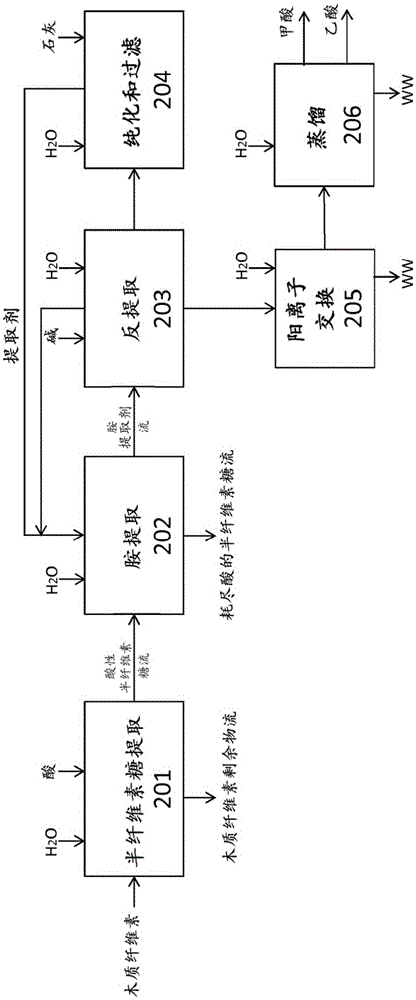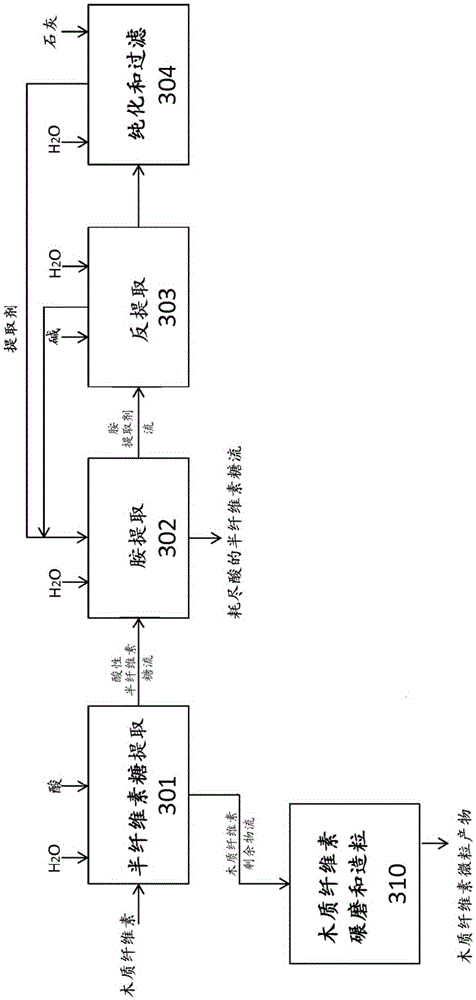Production methodology of hydrolyzed collagen using swiftlet nest as raw material
一种木质素、纤维素的技术,应用在处理烃油、纤维化学特征、烃油处理产品等方向
- Summary
- Abstract
- Description
- Claims
- Application Information
AI Technical Summary
Problems solved by technology
Method used
Image
Examples
Embodiment 1
[0161] Example 1 - Small scale hemicellulose sugar extraction
[0162] Table 1 provides a summary of the chemical analysis of the liquors obtained from the extraction of hemicellulose sugars from various biomass types. % monomeric sugars are expressed as % by weight of the total sugar weight. All other results are expressed as % by weight relative to dry biomass.
[0163] All treatments were performed in a 0.5 L pressure reactor equipped with a stirrer and heating-cooling system. The biomass and the liquid were charged to the reactor in the amounts given in the table below. The reactor was heated to the temperature indicated in the table and the timer was started once the reactor reached 5°C below the specified temperature. Once the time has elapsed, the reactor is cooled. Solids and liquids were separated and the resulting liquid content was analyzed, all data back-calculated relative to dry biomass weight. The HPLC method was used to estimate % total sugars, % monomer...
Embodiment 2
[0173] Example 2 - Large scale chemical analysis of lignocellulosic material after hemicellulose sugar extraction
[0174] Table 2 provides a summary of chemical analyzes of various types of biomass after hemicellulose sugar extraction.
[0175] Pine (Reference No. A1202102-5): Fresh Loblolypine chips (145.9 lbs dry wood) were fed into a Rapid Cycle Digester (RDC, Andritz, Springfield, Ohio). By adding 0.3% H in a separate tank 2 SO 4 and 0.2% SO 2 Aqueous acid (500 lbs) was prepared by adding to water. The solution was heated to 135°C and then added to the digester to cover the wood. The solution was circulated through the wood for 40 minutes while maintaining temperature. After 60 minutes, the resulting liquor was drained to a liquor tank and steam was used to blow the wood to a cyclone to collect the wood (128.3 lbs dry wood) and vent the steam. The extracted wood was analyzed for sugar content, sugar composition, ash, elements (measured by ICP) and DCM extract. An...
Embodiment 4
[0190] Example 4 - Ash Analysis of Louisiana Bagasse Feedstock Before and After Soil and Ash Removal
[0191] By microwave oven (3.1.CEMPhoenix TM Microwave muffle furnace) to evaluate the ash content of a bagasse sample taken from a pile at a sugar mill in Louisiana and found to contain 13.4% ash.
[0192] Table 3A: Ash results after different treatments to remove soil and ash
[0193] sample
% ash
Louisiana Sample R1
13.12
Louisiana Sample A
17.81
Louisiana Sample R2
13.38
Sample R1 washed with water
12.78
Sample A washed with water
17.16
Sample R2, 1 shear treatment, 1 pressure wash
6.67
Sample A, 2 shear treatments, 2 pressure washes
2.52
Sample R2, 6 shear treatments, 6 pressure washes
2.68
Sample R2, 8 shear treatments, 8 pressure washes
2.26
[0194] The results summarized in this table indicate the presence of high ash in Louisiana bagasse obtained ...
PUM
 Login to View More
Login to View More Abstract
Description
Claims
Application Information
 Login to View More
Login to View More - R&D
- Intellectual Property
- Life Sciences
- Materials
- Tech Scout
- Unparalleled Data Quality
- Higher Quality Content
- 60% Fewer Hallucinations
Browse by: Latest US Patents, China's latest patents, Technical Efficacy Thesaurus, Application Domain, Technology Topic, Popular Technical Reports.
© 2025 PatSnap. All rights reserved.Legal|Privacy policy|Modern Slavery Act Transparency Statement|Sitemap|About US| Contact US: help@patsnap.com



